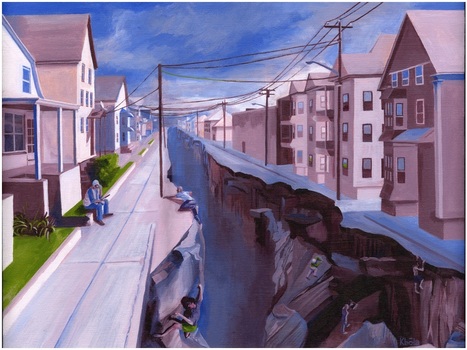This annual arts festival with a strong counter-cultural ethos literally is an experiment in producing alternative urban and cultural geographies that reject normative regulations embedded within societies. These geographies created last only about a week, as an escape from the regular strictures of society. The ephemeral alternative geographies then fade back into the desert but not without creating a visually remarkable place. A word of caution, it is a 'clothing-optional' event, so launching a Google image search live in class is not recommened.
I'll let the producer of the video explain: "It is an 8-day event which takes place annually in late August in the temporary city of Black Rock City located in a dry lakebed in northwestern Nevada, USA. The radial streets are laid out like a clock face, from 2:00 to 10:00. I have marked some of these streets as well as some of the prominent and favorite theme camps and villages. The attendees are all participants in a sense and are themselves the attraction. There is no corporate sponsorship or presence of any sort. Only ice and coffee are sold. Everything else is brought in under the concept of 'radical self-reliance' or gifted by others. Most 'burners' participate by finding the creative or artistic thing that they enjoy most and do best, do it to the fullest extent, and share it as much as possible."
Tags: art, culture, unit 3 culture, popular culture.



 Your new post is loading...
Your new post is loading...








